 Influencer-Only Voting
Influencer-Only Voting-
10K+Influencer23 days agoQuiet but Powerful : The Resurgence of K-Beauty Masks in Modern SkincareK-beauty masks are no longer just a passing trend. They are regaining attention as powerful skincare solutions. What was once seen as an occasional step before bed or something used for special events is now evolving into a high-performance category with advanced ingredient delivery systems. Masks that were once dismissed as hype are now going viral on platforms like TikTok, aligning perfectly with Gen Z’s desire for results-driven products that work quickly with minimal effort. But let’s be honest, most people still want something effective without a complicated routine. In this piece, we’ll explore the revival of sleeping masks, hydrogel masks, and even the rise of jelly toner pads as a simplified yet sensorial alternative. We’ll look at their ingredients, textures, and real-life effects to see what sets them apart. Why Masks Again? In 2025, the return of masks is not just nostalgia. It’s a renewed focus on efficacy. ●Gen Z’s priorities : visible results in minimal time●Influence of TikTok and short-form content : preference for products with immediate payoff●Post-pandemic skin goals : restoring and strengthening the skin barrierMasks are no longer just an extra step. They are now central to a results-focused skincare routine. Biodance Bio-Collagen Real Deep Mask Texture and adhesion : Made with medical-grade hydrogel that fits like a second skinKey ingredients : Low molecular weight collagen peptides, galactomyces, niacinamide, oligo hyaluronic acid, ceramidesResults : Firm, dewy skin by morning. Widely praised as a “mini spa treatment” that delivers that coveted glass skin look.User experience : Stays in place without slipping, even overnightReal review SNP Bird’s Nest Aqua Ampoule Mask Texture and adhesion : Soft hydrogel sheet designed to hold essence close to the skin for longerKey ingredients : Swiftlet nest extract, centella asiatica, hyaluronic acid, ceramides for deep hydration and soothingResults : Skin feels calm and plump. Especially loved for its hydrating effect without heaviness or irritationDownside : Some find the scent too strong, but many still repurchaseReal review Mediheal NMF Hydrogel Mask Texture and adhesion : Uses patented hydrogel sheet infused with NMF, five types of ceramides, eight types of hyaluronic acid, and panthenolKey ingredients : NMF complex, ceramides, peptides, squalane with a low pH for barrier repairResults : Light cooling sensation with intense moisture lock. Suitable even for sensitive skinReal review Here’s a quick visual comparison of the three hydrogel masks before we move on to a simpler alternative. Too much work? Jelly toner pads are the minimalist’s mask. Hydrogel masks offer amazing effects, but let’s face it. They can feel a bit much for beginners. The thick sheets and overnight wear aren’t for everyone. That’s where jelly toner pads step in. They offer the sensorial experience of jelly texture with the quick convenience of toner pads. No long wait time, no mess. Just apply and peel off in minutes. What’s driving their popularity? ●Convenience: Easy to use after cleansing, just stick and remove●Sensory appeal: Moist, jelly-like texture gives a luxe feeling●Effective delivery: Delivers hydration, brightening, and soothing ingredients directly●Beginner-friendly: No fuss, no overwhelm, just results Let’s take a look at three popular jelly toner pads. Needly Vita C Glow Jelly Pad Key Ingredients & Highlights : Vitamin C derivative, pomegranate, mulberry extracts for brightening and exfoliation Best For : Dull skin, uneven tone Real Review Medicube PDRN Collagen Pad Key Ingredients & Highlights : PDRN (salmon DNA), low molecular collagen for skin elasticity Best For : Dry, aging or sensitive skin Real Review Mimmua ICY Glacier Sherbet Pad Key Ingredients & Highlights : Glacier water, hyaluronic acid, panthenol for cooling and hydration Best For : Heated or irritated skin Real Review So we’ve looked at three trending hydrogel masks and three jelly toner pads that offer a more effortless way to experience similar benefits. While their formats may differ, the real question is simple: what works best for your skin? This article compared standout products based on key ingredients, texture, and user feedback.If your skin is sensitive, go for calming masks with plenty of ceramides and soothing agents.If your focus is on glow and firmness, collagen or PDRN masks are a great choice.And if sheet masks feel like too much, jelly toner pads offer a fuss-free alternative that still delivers. At this point, it is no longer about which mask is the best overall.It is about which one fits your skin, your routine, and your lifestyle.When you know what to look for, masks become more than just a nice extra.They become a direct and effective step in your skincare routine.
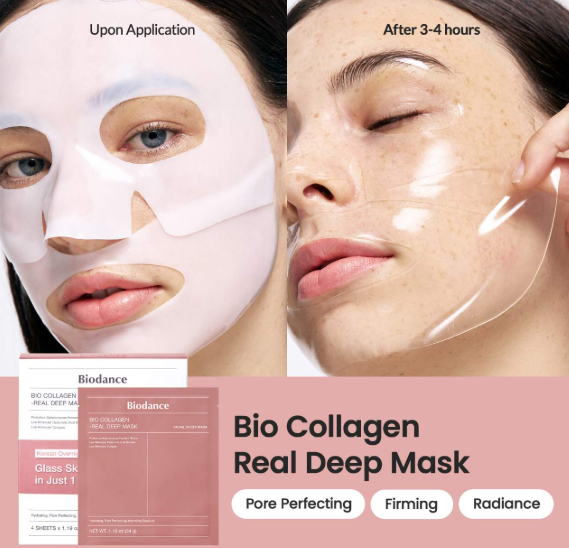
-
10K+Influencer23 days agoHow K-Beauty Cleansers Have Evolved from Squeaky Foam to Gentle Gel FormulasCleansing used to be simple. If it foamed, it worked. The more bubbles you got, the cleaner your skin felt. Or at least, that is what we believed. For years, Korean cleansers focused on that squeaky-clean finish, often relying on high-pH formulas and strong surfactants. That tight, slightly dry feeling after washing wasn’t a concern. It was a sign you did it right. But skincare has changed. And so have our standards. Now, if your skin feels stripped or stings after cleansing, that is a red flag, not a win.A modern cleanser does more than just remove dirt. It protects the skin barrier, calms irritation, and supports overall skin health. Korean beauty has led this shift by showing the world that cleansing does not need to be harsh to be effective. Here’s how K-beauty cleansers have evolved over the last two decades, shaped by product innovation, changing skin concerns, and the voices of everyday users. Cleansing Foam Trends in the Early 2000s In the early 2000s, cleansing was all about strong cleansing power and foam. Many believed that the more foam a cleanser produced, the better it worked. Rich and dense lather was considered essential for deep cleansing, so many formulas were packed with powerful surfactants known for their foaming abilities. Sodium Lauryl Sulfate, a strong foaming agent, was widely used. Most cleansers had a high pH, which often left the skin feeling tight and dry. At the time, this sensation was seen as a sign of cleanliness rather than a problem. Low pH or gentle cleansers were rare, as the focus was on thoroughly stripping the skin to maintain its health. Cleansers during this era were mostly functional, designed only to remove dirt, oil, and makeup. Added benefits like brightening or soothing effects were minimal, and even when included, the ingredients were simple and limited. In Korea, brands like Sulwhasoo from Amorepacific and early versions of Missha were still developing their identity in the market. Fragrances were often quite strong, with fresh and invigorating scents being especially popular. Most cleansers came in liquid or powder form, designed to create a rich foam rather than offer creamy or gel-like textures. The idea of using an oil cleanser followed by a foam cleanser started gaining attention but had not yet gone mainstream. (Note: I originally wanted to include product visuals and brand examples from this period, but many have been discontinued or reformulated, so it was difficult to find original images.) The 2010s : A Period of Major Change In the 2010s, the industry began to shift toward gentle, low pH cleansers. Formulas that were closer to the skin’s natural pH became more common, with mildly acidic cleansers around pH 5.5 gaining popularity. Brands like Atopalm, La Roche Posay, and Cetaphil became known for their gentle and skin friendly cleansers. By this time, the double cleansing method had gone mainstream. Oil cleansers became essential for breaking down makeup and excess sebum, followed by a foam cleanser to finish the process. Bioderma, Clio, and Shiseido oils were among the most widely used. Cleanser formats expanded well beyond foam. Gels, creams, mousses, and cleansing waters emerged to meet different skin needs. Gel cleansers for oily skin and cream cleansers for dry skin became especially popular. Micellar waters gained traction for their convenience and gentle cleansing power, with wipes becoming a go to option for on the go users. Bestsellers included Bioderma Sensibio H2O and La Roche Posay Micellar Water. Cleansers began including ingredients with added skincare benefits, such as hydration, calming, brightening, and antioxidant properties. The idea of a cleanser that cared for the skin while cleansing became more widespread. As K-Beauty gained global recognition in the mid 2010s, demand for plant based and gentle formulations increased. Innisfree, Laneige, Hera, and The Face Shop led the trend with natural ingredient based cleansers. Some of the most popular cleansers from this time included Bioderma Sensibio H2O, Innisfree Green Tea Foam Cleanser, and La Roche Posay Effaclar Gel. ✔A More Detailed Timeline ● 2010–2013: Mildly acidic and oil cleansers grew in popularity. The concept of double cleansing gained traction as oil cleansers helped dissolve makeup. ● 2013–2016: Cleansing waters and wipes became trendy for quick, gentle cleansing. Bioderma Sensibio H2O, in particular, saw global popularity. ● 2016–2019: Consumers looked for gentler ingredients and more diverse textures. The K-Beauty boom brought more natural and mild cleansing options tailored to different skin types. By this point, oil cleansers and mildly acidic foams had become staples, while micellar waters and wipes served as convenient supplemental options. The 2020s and What’s Happening Now Now in the 2020s, low irritation, mildly acidic cleansers are the new standard, typically with a pH of around 5.5. Many of these cleansers include hydrating ingredients like ceramides, panthenol, and hyaluronic acid to support the skin barrier and prevent irritation. Gentle, nourishing formulas are favored over harsh cleansers. Cleansing balms, creams, and milks have become go to options, often replacing traditional oils with lighter, more hydrating textures. Some cleansers now offer moisturizing, calming, or exfoliating effects in one step, catering to consumers who want shorter routines. These are especially popular among clean beauty and dermatological brands. There is growing demand for natural ingredients, vegan certification, cruelty free testing, and environmentally friendly packaging. Brands are developing products with refillable options and safer, cleaner formulas. Today’s foam cleansers include airy mousses, soft gels, and transparent jelly textures, each designed to match a specific skin type or concern. Formulas are now developed to support healthy skin microbiota. These products help maintain the skin’s microbial balance rather than stripping it away. Popular products today include the COSRX Low pH Good Morning Gel Cleanser and Make P:rem Cleansing Milk. Looking Ahead The evolution of Korean cleansers shows just how far skincare has come. What once was a one-size-fits-all foam has turned into a carefully curated ritual tailored to your skin’s needs. If your current cleanser still leaves your skin dry or irritated, maybe it’s time to ask yourself whether you are cleansing with care or just going through the motions. From silky milks to refreshing gels to powerful balms, there is now a K-Beauty cleanser that fits not just your skin, but also your values and lifestyle. So, which one feels just right for your skin today?
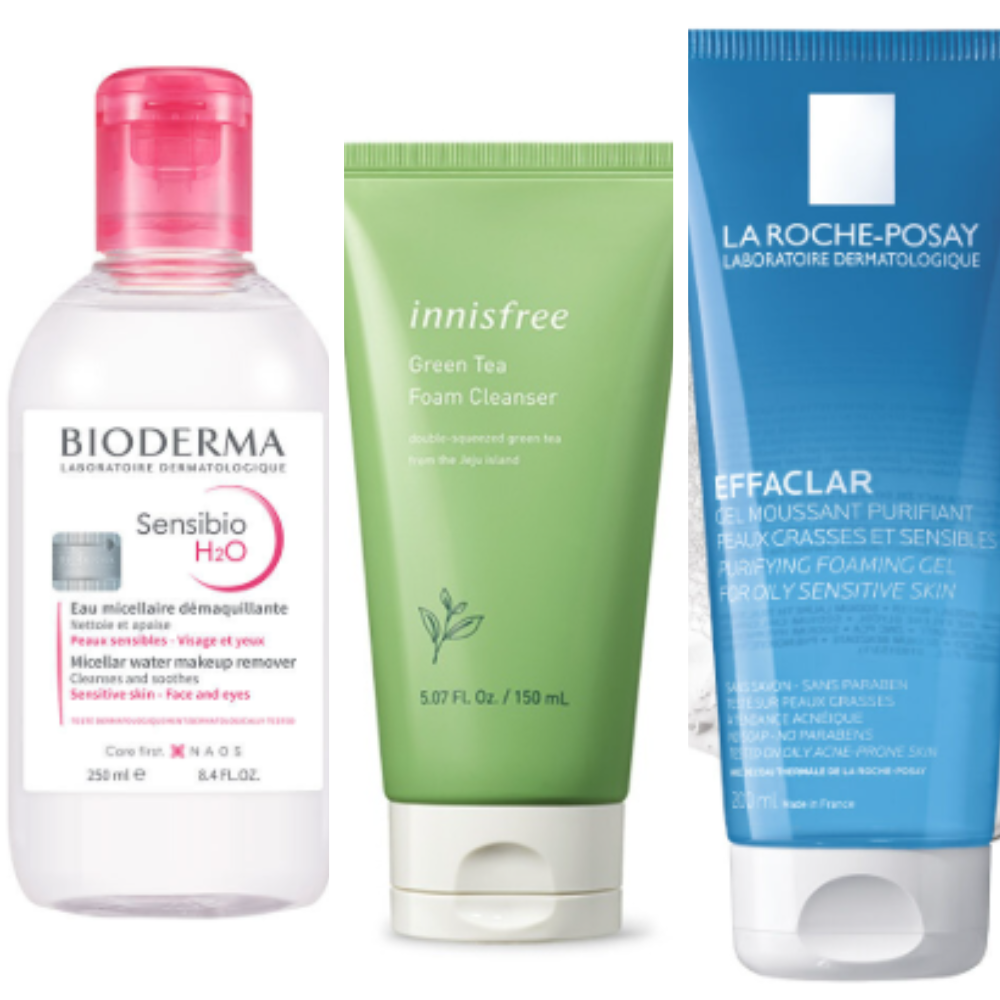
-
10K+Influencer27 days agoUltimate Cooling Skincare Showdown! Numbuzin vs. VT vs. Cell Fusion CWhen the summer heat weighs heavily on your skin, a cooling skincare product can feel like instant relief.Do you use cooling products during the hotter months? I personally reach for them daily as soon as the weather warms up. These days, many brands have developed their own dedicated cooling lines, making these products more than just a seasonal trend, they're essential for summer skincare. But did you know that the ingredients that create that cooling sensation vary widely from product to product? Some formulas feel light and refreshing, while others might be a bit too intense or irritating.The difference often comes down to the specific ingredients and their concentrations. That’s why finding a product that suits your skin type can be surprisingly tricky. Today, we’ll take a closer look at the key cooling ingredients in three popular products, Numbuzin No.4 Icy Soothing Sheet Mask, VT Cryo Ice Mask, and Cell Fusion C Post Alpha Cooling Pad. We'll examine which ingredients are used and how they deliver that much needed chill. Let’s start by taking a look at the full ingredient list for each product. Numbuzin VT Cell Fusion C I’ve pulled out only the key ingredients from each list that are responsible for the cooling effect. Numbuzin : Tea Tree Leaf Oil, Aloe Vera Leaf Extract VT : Menthyl Lactate, Ethyl Menthane Carboxamide, Methyl Diisopropyl Propionamide (MDPP) Cell Fusion C : Methyl Diisopropyl Propionamide (MDPP), Glacier Water At first glance, these ingredient names might seem unfamiliar or complicated.Unlike the simple alcohol or menthol based formulas we used to see, many modern cooling agents are more sophisticated. In fact, traditional ingredients like alcohol, menthol, and mint are becoming less common in newer formulations and here is why. 1. Skin irritation and drynessAlcohol can strip moisture from the skin, leading to dryness and irritation.Menthol and mint can trigger stinging, redness, or even allergic reactions in sensitive skin. 2. Risk of long-term skin barrier damageRegular use of alcohol-heavy products can weaken the skin barrier, leaving it more vulnerable to stressors. 3. Shift toward personalized and gentle careWith more consumers demanding products tailored to their skin type, there is growing interest in gentle and natural alternatives. 4. Stricter regulations and safety standardsSome countries have tightened regulations on alcohol and menthol content, encouraging brands to seek safer and low-irritation replacements. In short, while alcohol and menthol provide fast results, they can compromise skin health.This has led to the rise of newer, skin-friendly alternatives like the ones we’re highlighting today. Here is how the cooling ingredients used in the Numbuzin product work. Tea Tree Leaf Oil ●Known for its anti-inflammatory and astringent properties ●Helps reduce redness and calm irritated skin ●Provides a subtle cooling feel through its light scent and evaporative effect ●May cause irritation if used in high concentrations, especially on sensitive skin Aloe Vera Leaf Extract ●Delivers hydration and reduces heat-related skin discomfort ●Soothes and cools skin through its water-rich, lightweight texture ●Reinforces the skin barrier and helps maintain moisture Here is how the cooling ingredients used in the VT product work. Menthyl Lactate ●A derivative of menthol and lactic acid ●Offers gentle, lasting cooling with less irritation than menthol Ethyl Menthane Carboxamide ●A synthetic cooling agent derived from menthol’s structure ●Produces a strong and long-lasting cooling sensation ●Less irritating than menthol, and not related to alcohol Methyl Diisopropyl Propionamide (MDPP) ●Stimulates TRPM8 cold receptors in the skin ●Scientifically proven to reduce surface skin temperature ※TRPM8 stands for Transient Receptor Potential Melastatin 8. Simply put, it is a cold-sensing receptor found in the skin and mucous membranes. When activated, this receptor sends nerve signals to the brain, creating sensations of coolness, freshness, and a cooling effect. Cell Fusion C is similar to VT but contains glacier water as an ingredient. How does glacier water produce a cooling effect? Glacier Water ●Naturally cool water sourced from glaciers ●Lowers skin temperature on contact due to its inherent coldness ●Rich in minerals that help calm the skin and reinforce hydration ●Supports overall soothing and anti-redness effects MDPP ●Same TRPM8-activating compound found in VT Alcohol and menthol were once the go-to ingredients for instant cooling.But today, gentler yet effective alternatives are leading the way. Ingredients like MDPP, Menthyl Lactate and Ethyl Menthane Carboxamide are shaping the next generation of cooling skincare. While the ingredient lists give us a general idea, they do not specify the exact concentrations.So even though these cooling agents are considered gentler derivatives, the real experience can vary depending on your skin. Personally, I found the VT mask to be a bit too intense for my skin... If I were to rank them by cooling intensity, it would go Numbuzin < Cell Fusion C < VTwith Numbuzin offering the mildest cooling effect and VT delivering the most intense chill. Based on the characteristics of each product, here are some recommendations depending on your skin condition and cooling preferences. ✔ If you have thin skin that flushes easily or tends to react to strong sensations, Numbuzin No.4 Mask Pack→ This mask focuses on calming and hydrating the skin with minimal irritation. It feels gentle and refreshing without overwhelming the skin. ✔ If your skin has become more sensitive lately but you still want a cooling effect, Cell Fusion C Post Alpha Cooling Pad→ This offers a nice balance between mild cooling and a soothing finish. It’s suitable for daily use and helps reduce heat quickly without harshness. ✔ If you have thicker or oilier skin, or need immediate relief after outdoor activity or sun exposure, VT Cryo Ice Mask→ Delivers an intense cooling sensation almost instantly. It can be too strong for sensitive skin, but great for those who overheat easily or prefer a stronger chill. Numbuzin and Cell Fusion C are available on Olive Young Global and YesStyle, while VT can be found on DodoSkin and Musinsa Global. We hope you stay fresh and comfortable this summer with a cooling skincare routine that suits you best!
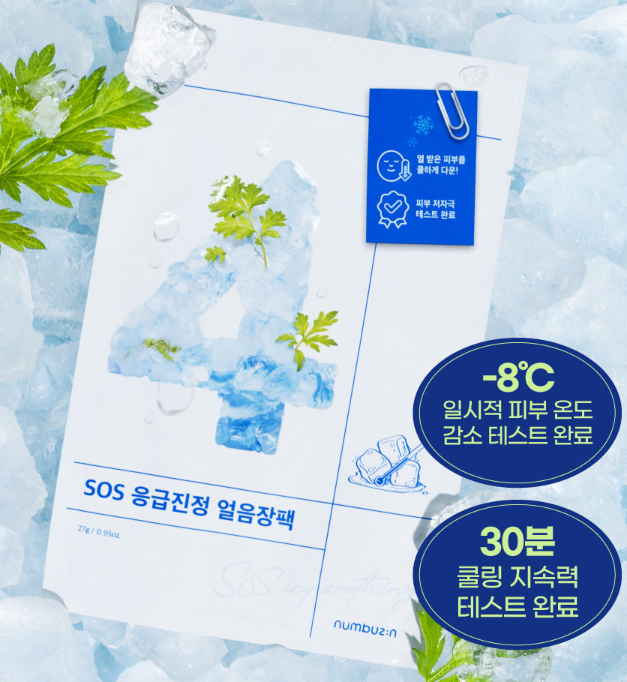
-
10K+Influencer27 days agoEverything about HeartleafNowadays, products that contain hearleaf as a key ingredient are going viral among korean skincare and it became favorite ingredient for many people. So what is hearleaf and how is it effective? 🍃 What is Heartleaf (Houttuynia Cordata)? Heartleaf's scientific name is Houttuynia Cordata. It is a flowering plant that is native in East Asia. It was used for a long time since past. It was used as a traditional herbal medicine for its detoxifying, anti-inflammatory, and antibacterial properties. Nowadays, it is used commonly in skincare as a powerful soothing and clarifying ingredient. It is especially loved by people with acne-prone, sensitive, and inflamed skin. When we look at ingredients of nowaday's skincare products, most of the ingredients are newly discovered or made. However, unlike them, heartleaf is a trational ingredient that was used for a long time in East Asia. People consumed it as a tea or poultice to cool the body, reduce internal heat, and purify the blood. And its calming property is used as a skincare ingrdient until now. 🧪 What Makes Heartleaf So Effective? Key Benefits: ✅ Anti-inflammatory — Reduces redness and calms irritated skin ✅ Antibacterial & Antimicrobial — Helps prevent and soothe acne breakouts ✅ Sebum control — Balances oil production without getting rid of moisture ✅ Antioxidant — Protects skin from oxidative stress and environmental damage ✅ Wound Healing — Accelerates skin repair and regeneration Heartleaf contains a rich amount of flavonoids (ex. quercetin and rutin), polysaccharides, and essential oils and all of them contribute to skin soothing and clearing. 🌱 Where It Comes From: Sourcing & Extraction Houttuynia Cordata grows in damp, shaded areas and is particularly abundant in three countries in Asia, Korea, China, and Japan. Heartleaf extract, that is used in skincare is usually drived from the flower, leaf, and stem par of the plant. There are two most common modern extraction methods. i) cold-press extraction ii) low temperature decoction These are used to preserve the bioactive compounds while minimising degradation. ex) Anua heartleaf 77 toner boast up to 77% heartleaf extract and maximise efficacy without adding additional irritants. 🔍 Heartleaf vs. Traditional Acne Ingredients Properties and benefits of heartleaf are similar or same with other traditional acne ingredients but its advantage is that it is very mild and gentle. People with sensitive skin weren't able to use other ingredients because it may cause irritation or stinging but after heartleaf became common in skincare products, skincare has become more accessible even for those with sensitive skin. 🧬 Heartleaf’s Active Compounds 🌿 Flavonoids: ex. Quercetin, kaempferol, and rutin They are powerful antioxidants that reduce oxidative stress and calm skin inflammation. 🌿 Polysaccharides: Provide hydration and support skin’s natural barrier function. 🌿 Essential Oils: Including methyl-n-nonyl ketone and is known for its antimicrobial effects. These natural actives work synergistically to cool down the irritated skin, reduce acnes, and strengthen the skin barrier. 🧪 Clinical Insights & Skin Compatibility Not only traditional usages but recent studies also support heartleaf's effectiveness in reducing inflammatory breakouts in skin conditions like acne and eczema. ✅ Low irritation potential — Ideal even for reactive skin ✅ Non-comedogenic — Doesn’t clog pores. Oily skin type can also use heartleaf. ✅ Safe for daily use — Works well with other actives like niacinamide, panthenol, and hyaluronic acid 🌟 Top 5 Korean Skincare Products with Heartleaf Anua Heartleaf 77% Soothing Toner — A high concentration of heartleaf for calming and balancing skin. Goodal Heartleaf Calming Moisture Cream — Gel cream texture. Contains heartleaf and madecassoside for sensitive skin recovery. Abib Heartleaf Essence Calming Pump — Lightweight essence with antioxidant and anti-inflammatory benefits. By Ecom Heartleaf Ampoule — Targets breakouts and irritation with high-purity extract. Isntree Spot Saver Mugwort Ampoule (with Heartleaf) — Combined heartleaf and mugwort for intense soothing action for people with sensitive skin. I also have very sensitive skins and after using heartleaf skincare, I could feel that my skin barrier got a lot stronger. I would recommend you to use those items that I chose as TOP 5. Also, if your skin is VERY sensitive, you'd better start using heartleaf by starting from the toner type products. Hope everyone's skin get clearer!!
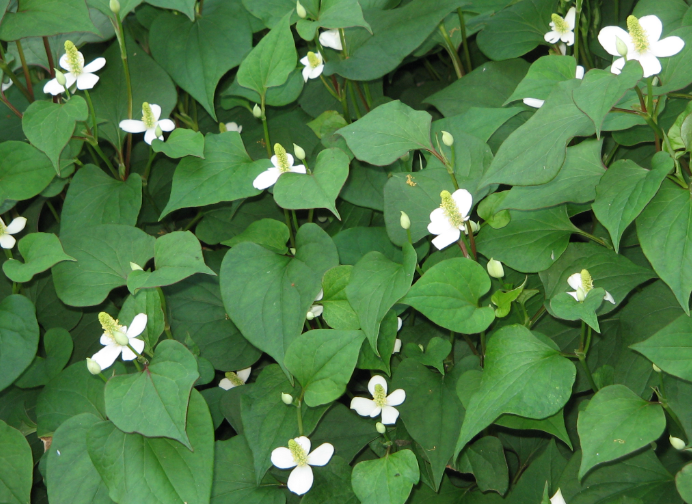
-
10K+Influencer28 days agoSanrio x K-Beauty Collabs: What Customers Are Really SayingK‑Beauty brands are all in on Sanrio lately Before introducing the collaboration lineups, let me explain what Sanrio is! Sanrio is a global character brand that originated in Japan in the 1960s.It is known for cute and friendly characters such as Hello Kitty, My Melody, Kuromi, and Cinnamoroll, loved by people of all ages from children to adults.Sanrio is more than just a character brand; it combines nostalgic retro vibes with modern sensibilities, maintaining steady popularity especially among Gen Z. So why did all these brands suddenly jump on the Sanrio trend? The main reason is that Sanrio taps into Gen Z and Millennial nostalgia and cuteness sells.Hello Kitty, My Melody, and Cinnamoroll are not just cute characters, but symbols of childhood memories and popular culture that resonate deeply with these generations.This retro sentiment naturally meshes with contemporary trends, capturing the hearts of young consumers who value self-expression and unique style.Moreover, the limited-edition nature of these collaborations creates urgency and exclusivity, driving fast and strong online reactions. In short, if it’s cute, it sells, and Sanrio is the ultimate proof.K-beauty brands know this well, and they’re turning our childhood memories into products we can’t resist. This time, Olive Young has collectively partnered with Sanrio, leading many brands to collaborate under the special theme called ‘Tanning Sanrio.’ Starting with Pochacco and including Hello Kitty, My Melody, Kuromi, Cinnamoroll, and Pompompurin many Korean brands at Olive Young are now collaborating with Sanrio Here are the brand x character lineups we’ve rounded up! 1. Hello Kitty Tools galore from Fillimilli including brushes, curlers, puffs, hairpins, and mirrors First up is Fillimilli, the brand that collaborated with Hello Kitty. Fillimilli is a beauty tool brand.Their design is based on an angel and devil concept, not just a simple print of the character’s face.They used pink and black colors to match the theme, and even the puffs are shaped like Hello Kitty’s face.This collaboration has received the most enthusiastic response among the current lineup.People have also compared it to previous Hello Kitty collaborations by other brands 2. My Melody Sun care and cooling products from Cell Fusion C (3 types of sunscreen, cooling pads, cooling serum, and sheet mask), Illiyoon Ceramide Lotion, So Natural Makeup Fixer, and Tree Hut Body Scrub. Sun care and cooling products from Cell Fusion C include three types of sunscreen cooling pads a cooling serum and sheet masks. Previously, Cell Fusion C had a collaboration with the frog character from the Korean soju brand Jinro.Since that collaboration was not well received, people are happy and relieved that the character was changed to My Melody this time. The downside is that the products are essentially the same, with only character-themed packaging or labels added. 3. Kuromi Skincare from Mediheal (PDRN toner pads and sheet masks), Illiyoon Cica Mist, Acne Body Wash, Ninewishes Tone-up Body Serum, and Tree Hut Scrub. Kuromi collaborated with the PDRN line, which pairs well with the purple color.Although the product labels only feature the character’s face, a Kuromi-themed shopping pouch is included as a gift. 4. Cinnamoroll Hair care from Growus (no-wash & damage treatments), Labo-H shampoo and ampoule tonic, plus Dallif Fixer, Hair Mascara, and shampoo. One of the most popular products in the Cinnamoroll collaboration is this item.Instead of simply printing the character’s face, a small Cinnamoroll figure is embedded in the lid!Along with Fillimilli, this collaboration has received great feedback, letting fans enjoy double the cuteness. 5. Pompompurin Bring Green Trouble Serum, Aloe Soothing Gel, Labo-H shampoo, treatment, and ampoule, Growus Sea Salt line, and from Bbia, tints and eyeliners. Labo-H’s collaboration is a strategic move. Since it’s currently summer in Korea, teaming up with cooling products is not just for fun, it’s designed to boost actual purchases, not just serve as a seasonal campaign. 6. Pochacco Makeup lovers this one's for you! Rom&nd tints, cheek, and eye palettes, Numbuzin No.1 line, Wakemake eye palettes, cushion foundation, and tints, plus Etude single shadows and tints, and more Bbia tints and eyeliners. Pochacco has collaborated with the most brands.With many brands and products involved, the response has been very positive. Details like the palette lids featuring Pochacco’s face have received good feedback.One advantage of collaborating on makeup products is that limited-edition colors are released.In this regard, makeup collaborations with Rom&nd and Bbia are very popular, and interest in the new colors is explosive. You can find these in website Olive Young Korea while the global website offers only a few of them!
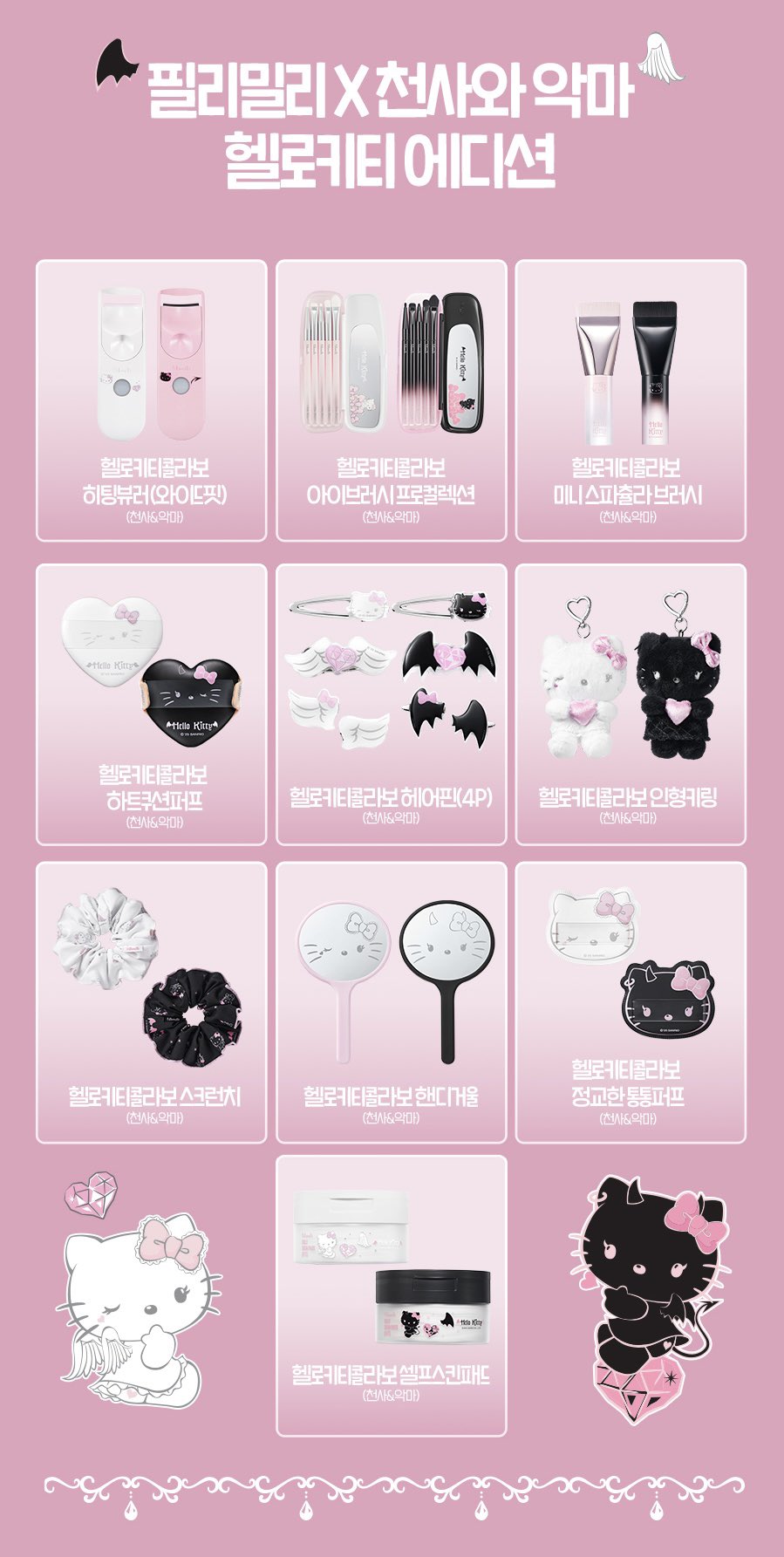
-
10K+Influencer28 days agoEverything about overnight beauty routine
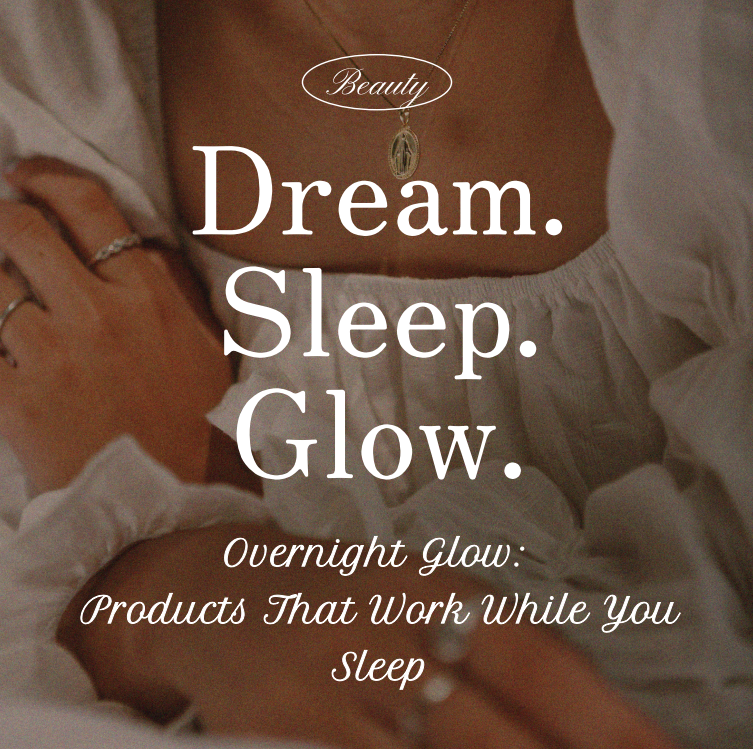
-
10K+Influencer1 mo. agoHow to Actually Apply Sunscreen RightWe all know sunscreen is a must but how many of us are actually applying it correctly? I used to just slap on a bit and call it a day… turns out, that barely does anything. ✅ You need about a coin-sized amount to properly cover your face. If you’re only using a pea-sized dab, you're seriously underapplying and not getting the protection you think you are. 🕒 Apply sunscreen 20–30 minutes before heading outside to give it time to absorb and form an effective barrier. 🔁 Reapply every 2–3 hours, especially if you’re outdoors or sweating. Skipping this step is one of the biggest mistakes people make. 😬 Don’t forget the often-missed spots like your eyelids, ears, neck, and even your hairline. These areas are super prone to sun damage but often overlooked. 📆 Check the expiration date. Sunscreen that’s past its prime won’t protect your skin properly, so toss it if it’s expired! 💡 And if you’re worried about a white cast, especially with Korean sunscreens, most newer formulas are super lightweight, blend easily, and won’t leave you looking ghostly. So don’t be afraid to apply generously. I’ve definitely been guilty of lazy sunscreen habits, but I’m trying to be more mindful now. What about you? Any funny sunscreen fails or tips you’ve picked up along the way? Let’s share!
-
10K+Influencer1 mo. agoFormulation Differences Between Korean and U.S. Skincare ProductsI’ve been noticing more and more Korean skincare products showing up in U.S. stores, both online and in-person at places like drugstores and beauty retailers. I usually shop from Korean sites like YesStyle or Stylevana, but if I can get something faster from a U.S.-based store, I’m definitely going to choose that for the convenience. I’m aware that sunscreens are treated as over-the-counter drugs in the U.S., so Korean sunscreens sold domestically have to use FDA-approved UV filters, rather than the newer, often more elegant filters available in Korea and other countries. But that got me wondering. Are there any other product types, besides sunscreen, where the U.S. versions have different formulations or ingredient restrictions? For example, do toners, serums, or creams from K-beauty brands get reformulated for the U.S. market in any way? Curious if anyone else has looked into this or noticed any key differences!
-
10K+Influencer1 mo. agoAnyone else super picky about moisturizers?I’ve been pretty loyal to Aestura’s Atobarrier 365 Cream as it’s been a lifesaver for my reactive skin. But now that the weather’s warming up, it’s starting to feel a bit too rich. Recently, a friend gave me a sample from a newer K-beauty brand I hadn’t even heard of, and I was honestly so surprised by how much I liked it. It reminded me a lot of Aestura in terms of how soothing and barrier-friendly it felt, but the texture was way lighter, super breathable, absorbed quickly, and didn’t leave that slightly greasy layer. Plus, no irritation or breakouts. It’s also fragrance-free, which I really appreciate. And as a bonus, it’s around $10 cheaper than Aestura. I ended up liking it so much that I bought the full size before I even finished the sample, which I never do! Has anyone else had something like that happen? Where a low-key product unexpectedly replaced your go-to favorite? Just wanted to share in case anyone’s been on the hunt for something similar! The one I tried is the Soonding Coconut Hydro Barrier Cream, definitely worth checking out if you're picky about moisturizers too.
-
10K+Influencer1 mo. agoToner Pads, Which Ones Do You Love?Toner pads have really been having a moment lately, and I can see why I’m personally a big fan! I love how easy they make it to target specific areas of the face depending on what your skin needs, whether it’s hydration, exfoliation, or calming. Are there any toner pads you swear by? Ones that truly made a difference for your skin? I’d love to hear your favorites!
 17
17